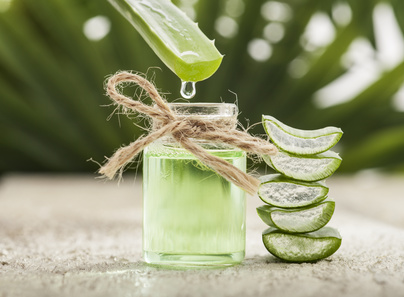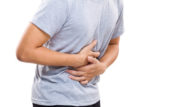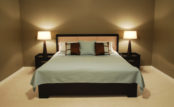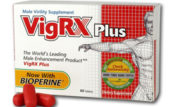 Remember those days in high school when acne would flare up at the worst possible time?
Remember those days in high school when acne would flare up at the worst possible time?
Maybe it was on picture day. And if that was the case, the photographer could at least touch up the image so the pimple in question wouldn’t make its way through the annals of time via your yearbook.
But you can’t hide the effects that acne has on your ego. Some 50 million adult Americans know that just a little too well, with medium to severe acne that may linger long after the halls of high school. In some cases, it can even strike randomly – and with great severity – in adults beginning after 25 who’d never been affected during adolescence.
The solution? Find the best remedies for acne for your situation, whether they’re lifestyle factors, in your pharmacy, or as several studies suggest, perhaps in your kitchen.
Skeptical? Consider this – researchers at Leeds Metropolitan University in the UK recently found that thyme was more effective at fighting the bacteria that cause acne that benzoyl peroxide, the latter being an alcohol often used in common acne products. And with some of the side effects linked to acne medications, including peeling, redness, mood swings and even birth defects, that’s welcome news.
Whichever remedy you find most useful in your attempt to get rid of acne, it’s important to first understand what’s behind this problematic skin condition and how some habits can make acne worse.
What Causes Acne?
Despite the lines you were fed as a child that chips, chocolate and foods generally high in sugar are prolific offenders behind many a pimple, there’s no definitive link between acne and junk food. There is, however, evidence that dairy can cause acne.
Acne triggers are often unique to each individual, but they’re all rooted in fluctuating androgens (male sex hormones), especially testosterone, which tells the skin to produce an oil called sebum that keeps skin moist. Acne occurs when this oil mixes with dead skin cells, stimulating bacteria growth that can lead to pimples if it spreads to the surrounding tissue.
In the 2011 movie Contagion, Kate Winslet’s character, a world expert in pathogens, estimates the average person touches their face almost 5000 times a day.
Along with pimples, acne can also appear as redness or a cyst. And cysts can be painful.
Acne is most common during adolescence, when testosterone levels are especially high, but acne can remain an issue well into adulthood, with common triggers including:
Wearing Straps – Shoulder pads, helmets, head bands and even bra straps, among others, are a breeding ground for bacteria that can spread to the skin and make acne worse.
Common Skin and Hair Products – Women in particular may find that some cosmetics and hair products can clog their pores and lead to a breakout. Oil-based skin products are notorious offenders.
Aggressive Cleansing – Scrubbing the face too hard or too often can lead to acne.
Touching Your Face – In the 2011 movie Contagion, Kate Winslet’s character, a world expert in pathogens, estimates the average person touches their face almost 5000 times a day. While that’s debatable, and it’s unlikely you’ll contract a deadly virus with this practice, it’s more than likely you’ll spread acne-causing bacteria.
 Hair Touching Your Face – On a related note, bangs and hair that hangs in your face can increase oily skin, with acne sometimes to follow.
Hair Touching Your Face – On a related note, bangs and hair that hangs in your face can increase oily skin, with acne sometimes to follow.
Stress – Another reason why it’s important to chill out when you’re feeling the pressure, stress can lead to acne.
Some Medications – Corticosteroids, certain barbiturates and lithium are linked to acne.
In other words, acne is caused by hormones, but these factors can make it worse.
Consider also that acne is often genetic. Premenstrual women may find that acne flares up before their period begins. Athletes and bodybuilders taking steroids are also at high risk of acne.
And yes, diet choice may also play a role in development of acne. At present there’s no conclusive evidence linking junk food to acne in the general population, but in some people it appears to have this effect.
How to Prevent Acne Or Get Rid of a Pimple
In some patients, acne can be prevented with minor adjustments to their cleansing and lifestyle. Skin products labelled nonecomedogenic shouldn’t clog the pores and are a good choice for consumers in whom oil-based skin products can trigger acne.
Regular cleansing, done twice a day, with a gentle soap or acne wash should also clear up mild acne breakouts, as should avoidance of any foods you’ve noticed make your skin break out.
And by the way, to get rid of an existing pimple, take a gentle but firm approach. Don’t squeeze the heck out of it, which can cause scarring, rather, try this:
Before bed, soak a cloth in the hottest water your tap will allow. Apply the cloth to the spot for one minute. This should melt the sebum clogging your pores. Next apply an OTC acne cream with 10% benzoyl peroxide – it’s designed to kill bacteria and dry the affected area. Now cover the spot with a bandage and let the benzoyl peroxide work while you sleep.
Prescription Remedies For Acne
Folks with persistent acne may find their acne remains even with lifestyle adjustments and benzoyl peroxide. It’s time to speak with your doctor if it’s still an issue after three months.
Acne medication is a step up from over the counter products and can reduce the frequency and severity of acne that’s particularly stubborn. Your doctor will prescribe a medication based on the kind of acne you have, be it pimples, whiteheads, blackheads or cysts.
 Popular medications include tretinoin (Retin-A), antibiotics and isotretinoin. Some doctors also prescribe oral contraceptive pills to reduce the effects of the hormones responsible for acne.
Popular medications include tretinoin (Retin-A), antibiotics and isotretinoin. Some doctors also prescribe oral contraceptive pills to reduce the effects of the hormones responsible for acne.
Patients with severe acne may benefit from a combination of these medicines, which are usually available as both topical and oral applications. Choice of treatment may also be influenced by the presence of inflammation or bacteria.
Some acne consists of red bumps with no open sores. This is called comedonal acne, and it’s often best treated with a topical solution. On the other hand, acne with bacteria or inflammation tends to respond better to oral antibiotics and isotretinoin.
The acne medications most often prescribed by doctors include:
Benzoyl peroxide – including Brevoxyl and Triaz
Salicylic acid – like Propa PH and Stridex
Both oral and topical antibiotics – including doxycycline, erythromycin and tetracycline
Topical retinoid creams – like tretinoin (Retin-A) and adapalene (Differin)
Isotretinoin
Some doctors also prescribe androgen blockers including spironolactone to reduce the oil caused by fluctuating hormones, and low-dose birth control pills like Estrostep or Yaz, which are generally effective for women with moderate acne or premenstrual outbreaks.
With this being said, you’ll want to be aware of the side effects of acne medications. Pregnant women in particular should not use antibiotics to control acne without speaking to their physician first. Bacteria can become resistant to antibiotics over time, after which a new antibiotic may be required. And some forms of istotretinoin can lead to birth defects in a developing fetus.
Topical acne medicines tend to have fewer and less severe side effects than oral medications.
A recent British study found that thyme may be an excellent natural remedy for acne. Perhaps even more so than benzoyl peroxide.
Generally speaking, acne medications are safe, but pregnant women and those with specific health concerns should speak with their doctor before pursuing any form of antibiotics or acne medicine.
Better yet, head to your kitchen. According to one new and encouraging study, one of the best remedies for acne, prescription or otherwise, may be sitting on your spice rack.
Thyme May Fight Acne
Yes it’s true – a recent British study found that thyme may be an excellent natural remedy for acne. Perhaps even more so than benzoyl peroxide.
In the study, presented to the Society for General Microbiology in Dublin in the spring of 2012, researchers steeped thyme, marigold and myrrh in alcohol and tested each tincture on the acne that cause bacteria. Each tincture proved effective at fighting acne after five minutes. But thyme stood out in particular and beat benzoyl peroxide in potency and acne-fighting properties.
The findings open the door to further studies regarding thyme as an herbal treatment for acne and alternative to common acne products. With benzoyl peroxide and salicylic acid – both fixtures in many common acne products – linked to burning and skin irritation, this is welcome news indeed.
It’s too early to tell whether thyme will prove itself the acne treatment that some natural health advocates take it to be. Critics note that thyme behaves different in a lab than it does in your kitchen, and that more studies are required before a thyme-based acne treatment is offered by a large manufacturer.
Still, it’s a great development for people with acne and on whom common acne products may trigger irritation. Put a little thyme on your plate if that appeals to you and it can’t hurt to see what it does.
Natural Remedies For Acne
In addition to thyme, some folks swear that you can beat redness, cysts and pimples with the following natural remedies for acne:
Lemon Juice, Tea-Tree Oil and Aqueous Cream
Directions: Before bed, and after a shower or bath and shampoo, liberally apply lemon juice on the face (this will itch for a moment). Next, rub a small amount of tea-tree oil on your face and add a thick layer of aqueous oil. Wear this solution to bed and sleep on your back.
This remedy may work even more effectively with a combination of three kiwifruit eaten daily and/or about ¾ cup of raw carrots.
Honey and Cinnamon
Directions: Mix three tablespoons of honey to one spoon cinnamon to form a paste. Apply in a circular motion to the affected area. This works best as an overnight application that you’ll wash off in the morning.
Fresh Basil Leaves
Directions: Soak a handful of fresh basil leaves in water for 15 minutes, then chill the mixture in your fridge for at least two hours. Then apply the solution with a cotton ball to the affected area.
Oatmeal, Vinegar, Raspberries, Egg, Sea Salt
Directions: Mash raspberries and add them to a bowl of oatmeal. Next, add a teaspoon of sea salt. Then add about two tablespoons of vinegar and an egg. Mix the solution with a spoon until it’s a paste. Now, after cleansing your face and exfoliating with a scrub or loofah, steam your face and apply the paste.
Leave this on for about 30 minutes or until it dries and crumbles. Rinse off with cold water.
Check out this site for more natural remedies for acne.
Try a Natural Skin Cleansing System
People with ongoing acne should also consider a natural, three-part skin cleansing system to clear up existing breakouts and to interrupt the cycle, which can take three months to appear.
Remember what we said about acne being a hormonal issue? That means that acne begins on the inside. For that you want a complete system, of natural ingredients, to bolster internal health and gingerly manage the factors that contribute to hormone imbalances and the flare-ups that go with them, including stress, diet, slow digestion and more.
Looking at these factors, is it any surprise that most drugstore creams don’t really get rid of acne? And with the adverse health issues linked to common acne medications, antibiotics and isotretinoin, your best best to get rid of acne, and to keep it away, may be to use a natural system with an herbal supplement.
 Try ClearPores – a three-part natural acne fighting system that includes a wash, a protective cream and, very notably, an herbal supplement to get acne before it develops. You can buy a system for the body or the face. Or for maximum value (and a 35% discount), buy the complete system for both.
Try ClearPores – a three-part natural acne fighting system that includes a wash, a protective cream and, very notably, an herbal supplement to get acne before it develops. You can buy a system for the body or the face. Or for maximum value (and a 35% discount), buy the complete system for both.
This isn’t the cheapest way to fight acne. It is, however, safe, it’s natural and as the studies that continue to trickle in indicate, the most effective way to fight acne and reclaim some semblance of your life and confidence.
The best remedies for acne may indeed be natural. Remember that the next time you’re at the pharmacy!




